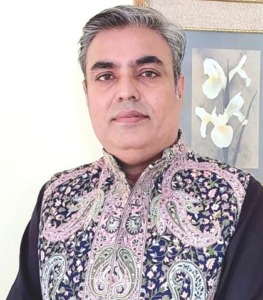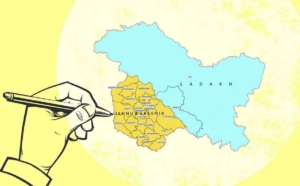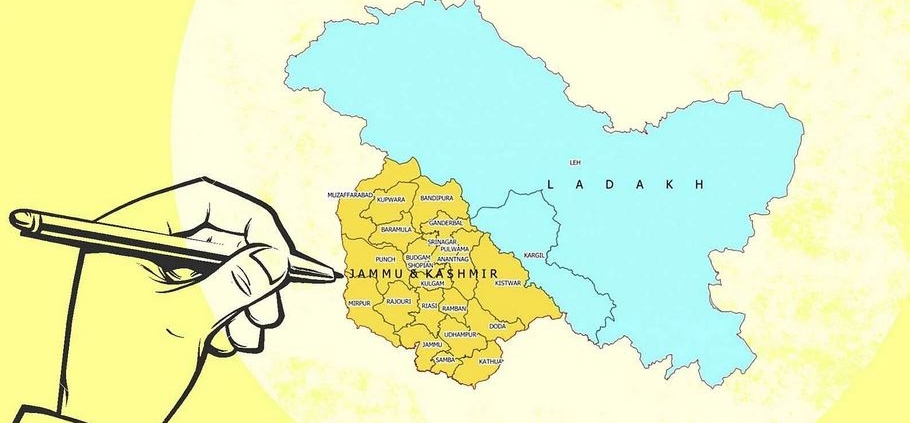CASE STUDY
Title: Beyond the Old Guard – Rethinking Political Engagement in Jammu & Kashmir
Published by: Policy and Research institute

Author: Shariq Maqbool Contributor Identity: Rashid Rahil

Executive Summary
Despite significant improvements in security indicators and infrastructural development post-2019, the political landscape in Jammu & Kashmir (J&K) remains fraught with legacy dysfunction and youth alienation. The traditional political establishment, widely seen as ineffective and self-serving, continues to dominate the narrative—alienating large sections of the population, particularly the youth.
This case study argues for a fundamental rethinking of the political model in J&K. It proposes a gradual but firm disengagement from legacy actors and an active cultivation of new, decentralized, and youth-led political platforms. The paper outlines an alternative roadmap for political transformation based on principles of inclusivity, legitimacy, and sustainable engagement—critical to India’s long-term strategic interest in the region.
Background and Context
The revocation of Article 370 in August 2019 marked a pivotal moment in the history of J&K. While this constitutional move aimed at deeper integration of the region with the Indian Union, its success hinges not just on administrative control but on political legitimacy.
For decades, governance in the region has been monopolized by a few dynastic political parties, often criticized for playing both sides—leveraging proximity to New Delhi while placating separatist sentiments locally. The result has been a vacuum of credible, people-centric politics. The traditional power centers have failed to address chronic issues such as unemployment, corruption, radicalization, and psychological alienation.
Meanwhile, a new generation of Kashmiris—more educated, aspirational, and politically conscious—is left without authentic representation. This demographic is increasingly critical of both the old local elite and what they perceive as the central government’s preference for continuity over reform.
Problem Statement
Despite policy shifts, the Government of India appears to be shielding legacy political players, while marginalizing emergent, reformist voices. This strategic contradiction sends conflicting signals to the youth and reform-minded civil society actors. As a result:
Political disillusionment is deepening.
Democratic participation remains low in spirit, despite formal electoral activities.
Radical and anti-mainstream ideologies find fertile ground due to the lack of credible alternatives.
Efforts toward national integration are perceived as cosmetic rather than transformative.
Strategic Risks of Status Quo
Youth Drift: A large segment of the youth population feels voiceless, increasing the risk of radicalization or complete withdrawal from democratic processes.
Narrative Capture by Adversaries: The political stagnation provides hostile external actors (e.g., Pakistan-backed propaganda) with the opportunity to exploit the sentiment of betrayal and disenfranchisement.
Development Fatigue: Without parallel political reform, infrastructural development and welfare schemes are viewed as transactional, not transformational.
Proposed Alternate Political Framework
1. Decentralized Political Empowerment
Empower local governance structures—panchayats, block development councils, and urban local bodies—with real autonomy.
Introduce direct youth participation mechanisms in decision-making and policy formulation.
2. Support New Political Platforms
Identify and encourage grassroots movements, youth-led civic bodies, and regionally rooted but nationally aligned political startups.
Ensure they are provided a level playing field—media access, security cover, and administrative cooperation.
3. Constitute a Transitional Political Council
A non-partisan, time-bound council comprising educators, civil society leaders, former bureaucrats, and youth leaders.
Mandated to draft a blueprint for democratic renewal and trust-building over a 3-5 year term.
4. Strategic Phasing Out of Legacy Actors
Politically and symbolically disengage from dynastic elites through policy signaling, not confrontation.
Redirect government support and engagement toward performance-based metrics, not legacy loyalty.
5. Create Safe Spaces for Youth Expression
Facilitate institutional mechanisms for young Kashmiris to engage with national institutions—parliamentary fellowships, cultural exchanges, and startup grants.
6. Narrative Ownership
Support alternative media channels and platforms for Kashmiris to tell their own stories—highlighting voices of hope, innovation, and reform.
Train and elevate young media professionals and digital content creators from within the region.
Conclusion and Recommendations
This is a rare strategic window to reset the political paradigm in Kashmir. The failure of traditional politics is evident, and the youth are demanding dignity, inclusion, and opportunity-not merely slogans or state-led development.
A bold, forward-looking political shift -away from legacy actors and toward a new generation of leaders, is not just desirable, but vital for national security, narrative control, and democratic stability. The cost of inaction is the slow erosion of gains made in security and development. A new political imagination is the missing link in India’s Kashmir strategy.
Policy Recommendations Snapshot
Recommendation Implementation Agency Timeline
Youth Inclusion Program Ministry of Home Affairs + MEITY Immediate (6-12 months)
Transitional Political Council NITI Aayog + MHA 12–24 months
Support to Emerging Parties ECI + Civil Society 1–3 years
Narrative Platforms PIB + I&B Ministry Ongoing
Disengagement Protocol PMO + NSA Discreet, phased
Annexure
Data on youth unemployment and political participation in J&K (2019–2024)
Survey snippets from Kashmir-based youth organizations
Comparative case studies: Northeast India, Afghanistan pre-2001 Bonn Agreement



Leave a Reply
Want to join the discussion?Feel free to contribute!